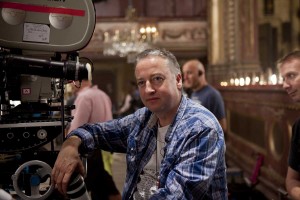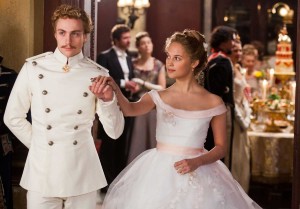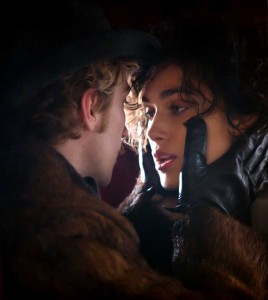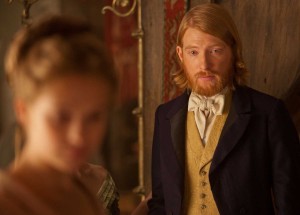
Director Joe Wright initially considered making Anna Karenina – based on Leo Tolstoy’s tragic novel about adultery in 19th century Russia – on location. Instead he went in an entirely different direction. As reconceptualized, the drama would unfold in a beautiful decaying theatre, a metaphor for a rotting Russian society of that era.
The interior of the theatre was built on an enormous stage at England’s storied Shepperton Studios. Director of photography Seamus McGarvey was faced with lensing 240 scenes on 100 different sets during the 12-week shoot. But instead of complicating his task, the cinematographer found virtues in Wright’s approach. “It streamlined the ideas and gave us more visual cohesion by building the film from the ground up in one place,” he said. “It was a real joy to curate all aspects of the visuals from production design to costumes and to lighting.”
And by shooting almost entirely in a studio environment, “I was able to be bolder in the lighting style and also simpler, which created a unique look to the film,” he observed.

McGarvey was also able to use techniques he hadn’t previously employed. “I usually have a more naturalistic approach, but this was quite the opposite,” he said. Meanwhile, a state-of-the-art computer board gave him easy control of all the lighting set-ups. “Because of the amount of camera movement in the film, this was an essential tool, because as the camera moved from backlight to frontlight the image still had integrity and shape,” said the DP.
McGarvey is known for exquisite, long tracking shots, and he again took it to the limit in the ballroom scene where the camera follows Anna and her lover Vronsky onto the dance floor. As they weave through dozens of other whirling couples, it fixes on them totally alone. “Joe and I wanted to combine objectivity and subjectivity within the same shot,” said the Irish cinematographer, referencing a celebrated long tracking sequence in their collaboration on Atonement, which garnered McGarvey an Oscar nomination for best cinematography and similar nods from the American Society of Cinematographers and BAFTA.

“What we wanted to express was the camera at once witnessing Anna and Vronsky ignited with passion while the rather static couples are frozen into a very stiff dance,” he explained. “So as they pass by they are twirling and the camera circles them faster and faster, until Vronsky lifts Anna into the air and then pulls back finding them alone.”
The sequence required some tricky logistics. “It has a big emotional impact, but to shoot it was quite hilarious,” he noted, because when the camera pulled back “we had to move the dancers and about 150 extras out in five or six seconds, creating an almighty stampede while Anna and Vronsky had to maintain their composure.”
McGarvey also used minimal camera movement and careful framing as well. In one dialogue scene between Keira Knightley as Anna and Jude Law as her cuckold husband Karenin, the DP wanted to show “a rigidity and lack of life in the airless space between them, and that required a very static camera style.” He employed chiaroscuro lighting when photographing the faces of the actors, highlighting one side while leaving the other half in shadow. “I love faces, and this film had more close-ups than I normally use,” he said. “Joe and I wanted to see these faces express emotions and advance the story. And the camera also adores Keira Knightley. She can be lit in almost any way and she’s exquisite.”

McGarvey used one of the oldest tricks of the cinematographer’s trade to soften close-ups: Christian Dior 10 denier stockings served as a filter over the back of the camera lens, a technique he had used in Atonement. “When the stockings are on, they just blend into the celluloid and you get this nice blooming effect,” he said. “It’s lovely on the characters’ skin.”
Anna Karenina was filmed with anamorphic lenses, requiring slightly more light, and some of the lighting the DP used was older in style, incorporating tungsten. The movie’s lush look can also be attributed to using film instead of opting to go digital. “Film has this unpredictable magic that I love,” said McGarvey. “It can take reality by the scruff of the neck and turn it inside out.”
Anna Karenina is the DP’s third film with Wright. In addition to Atonement, he also photographed The Soloist, about a Los Angeles street person who has amazing musical gifts. Next up for McGarvey is a real change of pace, the remake of Godzilla, now in prep. This shift to more fanboy fare was presaged by his DP work on one of the blockbusters of 2012, The Avengers.





